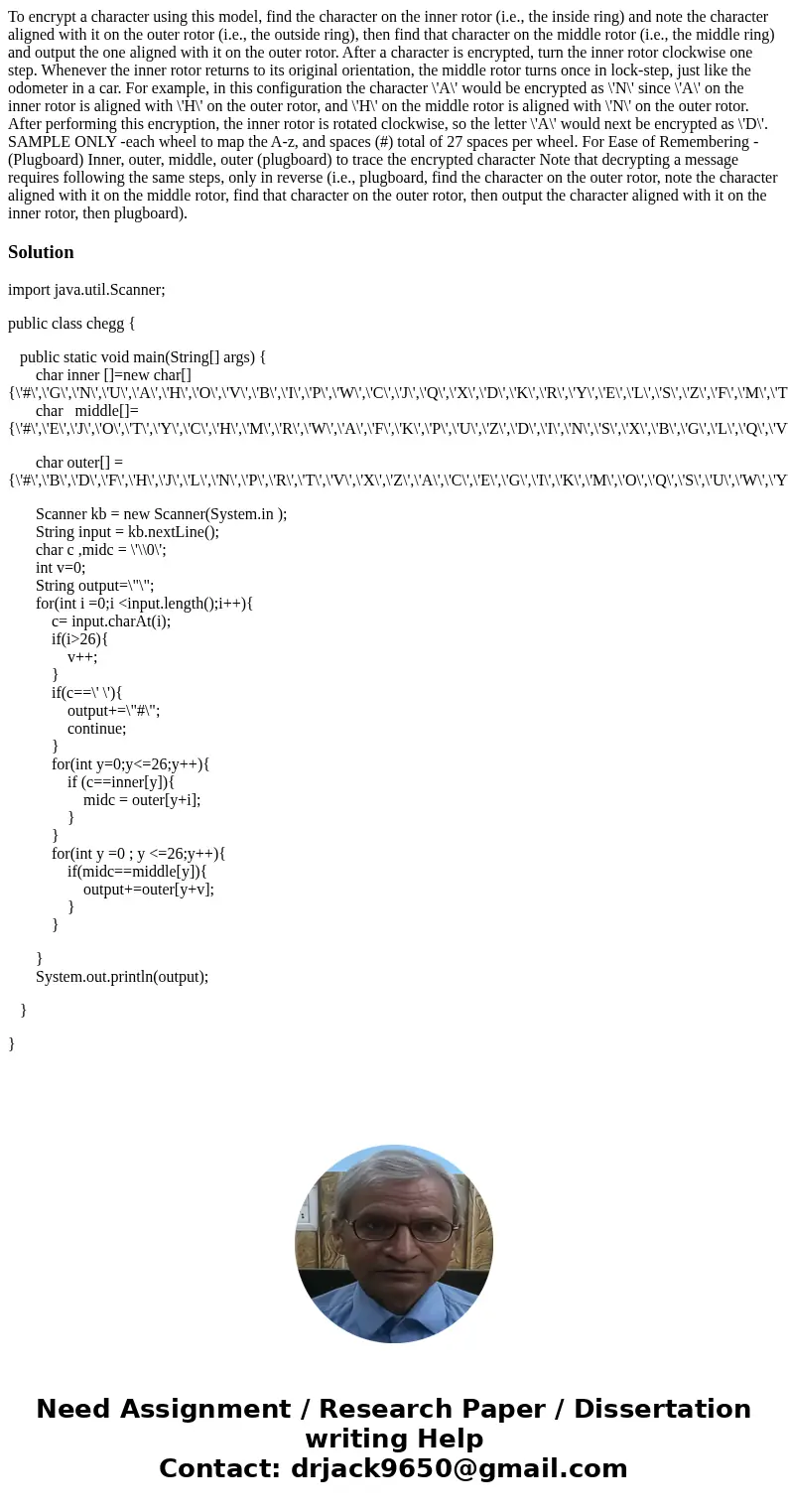To encrypt a character using this model find the character o
Solution
import java.util.Scanner;
public class chegg {
public static void main(String[] args) {
char inner []=new char[]{\'#\',\'G\',\'N\',\'U\',\'A\',\'H\',\'O\',\'V\',\'B\',\'I\',\'P\',\'W\',\'C\',\'J\',\'Q\',\'X\',\'D\',\'K\',\'R\',\'Y\',\'E\',\'L\',\'S\',\'Z\',\'F\',\'M\',\'T\'};
char middle[]={\'#\',\'E\',\'J\',\'O\',\'T\',\'Y\',\'C\',\'H\',\'M\',\'R\',\'W\',\'A\',\'F\',\'K\',\'P\',\'U\',\'Z\',\'D\',\'I\',\'N\',\'S\',\'X\',\'B\',\'G\',\'L\',\'Q\',\'V\'};
char outer[] = {\'#\',\'B\',\'D\',\'F\',\'H\',\'J\',\'L\',\'N\',\'P\',\'R\',\'T\',\'V\',\'X\',\'Z\',\'A\',\'C\',\'E\',\'G\',\'I\',\'K\',\'M\',\'O\',\'Q\',\'S\',\'U\',\'W\',\'Y\'};
Scanner kb = new Scanner(System.in );
String input = kb.nextLine();
char c ,midc = \'\\0\';
int v=0;
String output=\"\";
for(int i =0;i <input.length();i++){
c= input.charAt(i);
if(i>26){
v++;
}
if(c==\' \'){
output+=\"#\";
continue;
}
for(int y=0;y<=26;y++){
if (c==inner[y]){
midc = outer[y+i];
}
}
for(int y =0 ; y <=26;y++){
if(midc==middle[y]){
output+=outer[y+v];
}
}
}
System.out.println(output);
}
}

 Homework Sourse
Homework Sourse